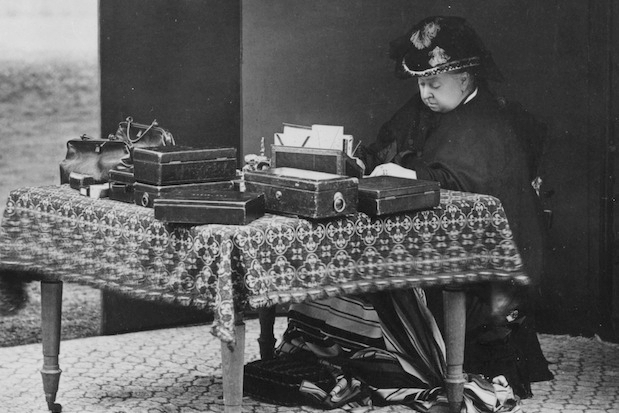Queen Victoria was the inventor of official royal biography. It was she who commissioned the monumental five-volume life of Prince Albert, a controversial and revealing work. She wrote most of the personal sections herself. She also published bestselling volumes, such as Leaves from a Journal of Our Life in the Highlands. She was a gifted and prolific writer, penning an estimated 2,500 words a day. When she died in 1901, however, there was no authorised biography. Instead, the decision was made to publish her letters. People tend to assume that letters are the truth but, as Yvonne Ward shows in this original and engaging book, selection is everything.
The idea of editing Victoria’s letters originated with Lord Esher. Feline, manipulative and magnificently creepy, he was a courtier who would have felt at home with the Borgias. His master, King Edward VII, who was never known to read a book, had a horror of putting the royal family on show, and was neurotic about documents. He ordered many of his mother’s papers to be burnt, including her indiscreet letters to her favourite, Disraeli, and a box of material about John Brown. Esher reckoned that he would satisfy the King while commemorating the great queen by publishing a selection from her letters covering her life up to the death of Prince Albert in 1861, when she was 42.
This turned out to be a far harder task than Esher had anticipated. The sheer volume of stuff was overwhelming — over 460 volumes of documents. So he hired a co-editor to do the work at the coalface, reading, sorting, selecting and transcribing letters from the enormous archive. This was A.C. Benson, an Eton master who quit his job in order to work on the project.
As Ward points out, both Esher and Benson were fixated on Eton — or rather on Eton boys. While at Eton, Esher had been seduced by the paedophile master William Cory (later Johnson), but this didn’t destroy him psychologically. Far from it: he thrived on leading a double life, having affairs with adolescent boys and frequently returning to the school. At the time that he was editing the letters, he was infatuated with his own son Maurice, whom he called Molly, then a boy at Eton.
Benson also had a passion for beautiful boys. His father, Edward Benson, had been Archbishop of Canterbury, but the family was notoriously gay. His two brothers were homosexual, and his mother Minnie enjoyed passionate relationships with women throughout her marriage. As a widow, she set up house with the daughter of Archbishop Tait, who had been Benson’s predecessor at Lambeth.
Ward suggests that men such as Esher and Benson were not fit to edit the papers of a woman like Victoria. Benson’s experience of the opposite sex was limited, and this prevented him from understanding Victoria’s relationship with Albert. Esher, on the other hand, was married, but he had learned from his double life the need for extreme secrecy. This led him to edit out compromising episodes in Victoria’s life, such as the scandal over Lady Flora Hastings, when the young queen accused an unmarried lady-in-waiting of being pregnant when in fact she was dying of liver cancer.
As Ward shows, Benson and Esher deliberately shaped our view of Victoria, playing down her foreignness. Her mother was German and her father half German, and she corresponded prolifically with her German uncle King Leopold of Belgium; but many of these letters were pruned. Those she wrote to the avuncular Lord Melbourne, her first prime minister when she became queen, aged 18, are given a lot of space — though anything that shows her as a Whig partisan is cut. The editors saw nothing strange in Albert’s drive for power, taking over the role of monarch and rendering his wife incapable by making her pregnant nine times in 17 years. The
letters Victoria wrote to other women the editors thought ‘very tiresome’, so there is little about matters such as childbirth or clothes.
Whether this selection was really due to the editors being gay is debatable. Ward is surely right to point to the connection between royal biography and a culture of secrecy. Most royal biographers during the 20th century were gay, and many had close ties with Eton. But I doubt whether any biographer in the 1900s — and especially one of Queen Victoria — could have published intimate details of the queen’s sex life or her pregnancies. Even Lytton Strachey, who wrote a life of Victoria which was considered shockingly frank in 1921, couldn’t do that.






Comments